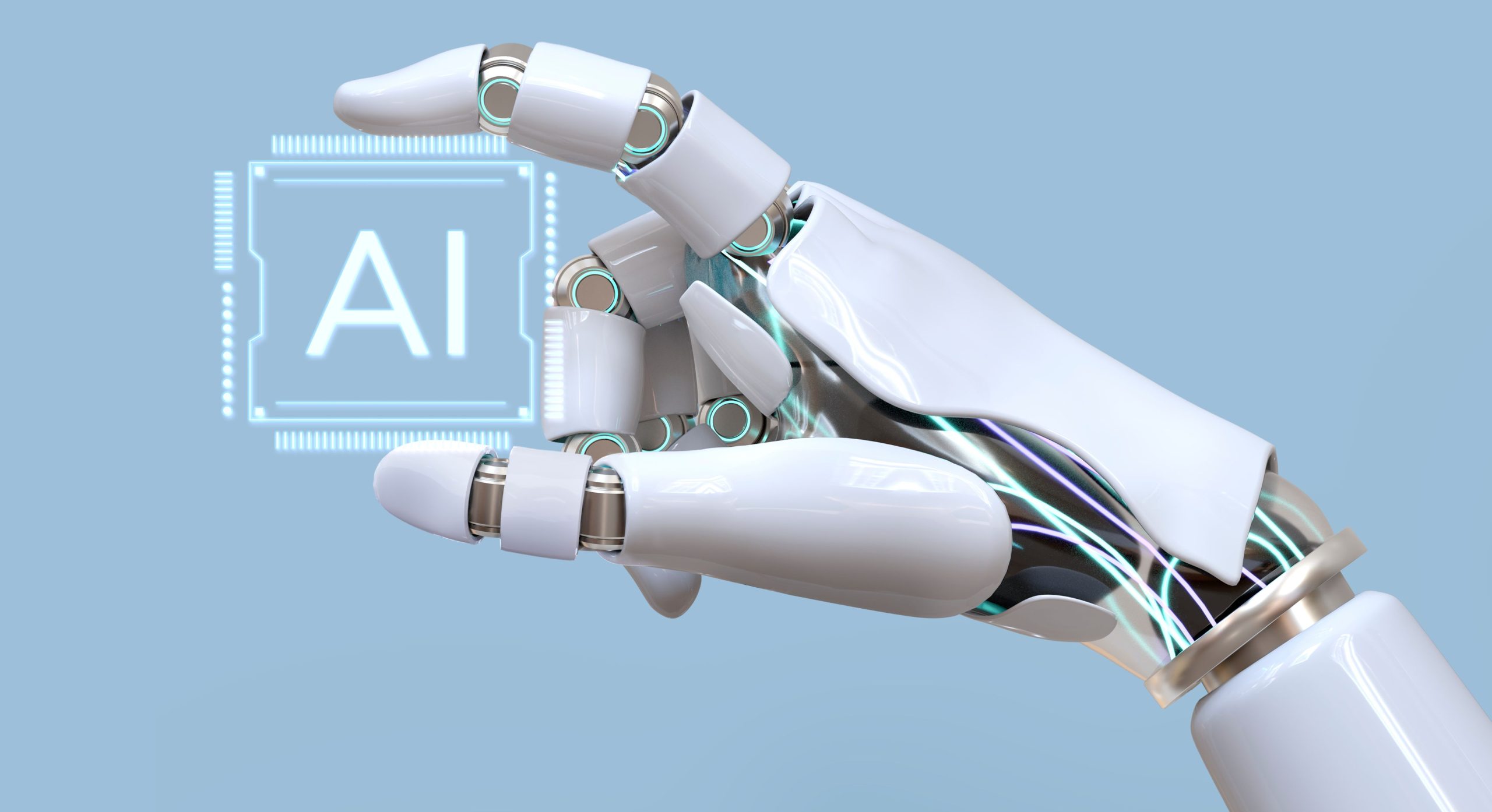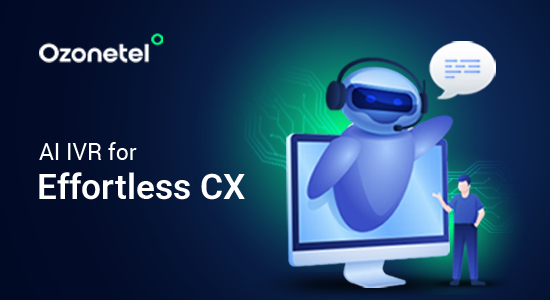- Resources
- What is AI Customer Service? Everything You Need to Know
What is AI Customer Service? Everything You Need to Know

Artificial Intelligence (AI), when integrated with customer service, can help companies offer faster and more personalized 24/7 support, which is a necessity to meet the high expectations of consumers. It does this by handling routine inquiries, freeing up human agents to tackle more complex issues, thereby improving overall service efficiency and customer satisfaction.
However, implementing AI in customer service comes with its own set of challenges – you need to consider various factors such as budget, data security, and integration with existing systems. And that’s just the beginning!
But don’t worry because we have created this article to help you know the complete ins and outs of AI in customer service, right from its meaning and benefits to the best practices to implement it. Read along!
What Is Customer Onboarding?
The customer onboarding process focuses on nurturing new customers—ensuring they are properly set up, familiar with your product, and comfortable using it. The purpose of customer onboarding is to provide value to your consumers as soon as possible so that they continue to return to your product and quickly embrace it as part of their regular work routine.
What is AI in Customer Service?
Customer service is an essential component of any organization, comprising the support and help provided to clients prior to, during, and after a transaction.
AI in customer service is the application of intelligent technologies to provide rapid, efficient, and personalized support. AI-powered customer service products help enterprises automate experiences, streamline workflows, and support agents, eventually saving time and money. It accomplishes this by using technologies such as:
- Natural language processing (NLP)
- Sentiment analysis
- AI self-service
- Predictive analytics
- Agent assistance
The result? Customers are happier because they receive rapid assistance. Employees are also happier because repetitive duties don’t drain their motivation. For the business, it implies offering excellent service without exceeding the budget.
And if you still don’t believe us; here are some statistics to prove the point:
- 66% of Gen Z customers are interested in AI that can assist them via a product or website.
- 59% of buyers would use AI to return an item.
- 89% say it will affect their life in the next five years.
- 63% of Gen Zers like personalized offers.
- 42% of clients value AI-based product recommendations.
Role of AI in Customer Service

Here are a few common—and not-so-common—roles that AI plays in customer service:
Streamline Workforce Management
Artificial intelligence-powered workforce management (WFM) is critical for effectively managing support staff. By evaluating previous data, AI can forecast personnel requirements for specific days, months, or seasons, lowering overtime costs and cutting wait times. Furthermore, it automates team scheduling and tailors shifts to each team member, saving managers and agents time.
24×7 Support Availability
It helps organizations to provide round-the-clock customer service and swiftly resolve issues. Customers may get answers to their issues 24 hours a day, seven days a week, without having to wait long periods of time. This could be significant for worldwide firms seeking to improve customer service.
Chatbot-Powered Client Assistance
Chatbots reduce customer wait times and provide faster answers to their questions, hence enhancing consumer loyalty. They can not only respond quickly in real time, but they can also ease the burden on human agents by handling a large number of client inquiries with the highest accuracy and human-like engagement.
Predicting Consumer Needs
Machine learning is essential for processing and analyzing large data streams and determining what actionable insights exist. In customer service, machine learning and predictive analytics can help agents identify common requests and responses.
Helping Customers make Decisions
Automated AI-powered assistants swiftly react to consumer questions, gather thorough information about the product or service, and offer advice to aid customers in making the best decisions. If the customer’s communication with the chatbot grows too intricate, it is routed to a human agent. Bots can also learn from previous interactions and provide accurate solutions because of their machine learning capabilities.
Improve Call Management
AI call center systems generate after-call summaries to save agents time and transcribe voice conversations to help agent training. Voice QA software also uses artificial intelligence to assess phone encounters and identify consumers who are likely to churn. Furthermore, AI agents may assist clients via continuous digital channels like SMS, social media, and email, reducing call volumes.
Personalize Experiences
Generic responses might make clients feel undervalued and disregarded. However, AI can prevent this by personalizing interactions based on a customer’s previous encounters and preferences.
This personalization might range from specialized product recommendations to custom support solutions. For example, an online streaming platform may use AI to suggest episodes and movies based on a user’s viewing history. It will provide a more engaging user experience.
Benefits of AI for Customer Service

Here’s a look at the key advantages of using AI in customer service:
- Cost Reduction: AI significantly lowers operational costs by automating routine tasks such as handling FAQs and guiding customers through simple processes. This reduces the need for a large customer support team, enabling businesses to allocate resources more efficiently.
- 24/7 Availability: This ensures that customers receive instant assistance at any time, improving service accessibility and satisfaction, especially for global customers in different time zones.
- Faster Response Times: AI-powered tools, like chatbots, deliver immediate responses to customer inquiries, drastically reducing wait times. This quick service enhances the customer experience and ensures consistent support, which is crucial in building customer loyalty.
- Personalized Customer Interactions: AI can analyze customer data to offer personalized recommendations and solutions based on past interactions and preferences. This tailored approach not only resolves issues more effectively but also makes customers feel valued, boosting retention and satisfaction.
- Improved Agent Productivity: By handling repetitive and low-level tasks, AI frees up human agents to focus on more complex issues. This not only increases agent productivity but also reduces burnout, leading to a more motivated and efficient support team.
- Scalability: AI solutions can easily scale to handle increased volumes of customer interactions without compromising service quality. This flexibility is particularly beneficial during peak periods or as the business grows.
- Reduced Human Error: Automation through AI minimizes the risk of human error in customer service processes, ensuring that interactions are handled with greater accuracy and consistency.
- Revenue Generation: AI not only supports customer service but can also identify opportunities for upselling or cross-selling during interactions, turning customer support from a cost center into a revenue generator. a
Applications of AI in Customer Support
Still not convinced? Let’s explore how some of the world’s leading companies are leveraging AI to enhance their customer service.
Bank of America
Bank of America’s AI-powered virtual assistant, Erica, is designed to handle a wide range of customer queries, from balance checks to financial advice. With Erica, customers can quickly access information and complete transactions without waiting for a human representative. This improves efficiency and ensures that customers get the help they need, anytime—day or night.
KFC
KFC, in collaboration with Baidu, uses facial-recognition technology in China to suggest menu items based on a customer’s age and mood. This approach not only speeds up the ordering process but also offers a personalized experience that resonates with KFC’s digital-savvy customers.
Amazon
Amazon’s chatbot assists customers in browsing the website, tracking orders, and even getting personalized product recommendations. This AI-driven assistant simplifies the shopping experience, ensuring customers can find what they need quickly without unnecessary waiting or hassle.
Tesla
Tesla’s chatbot answers common questions and allows customers to schedule test drives. This reduces the need for customers to visit a dealership or wait on hold, making the entire process smoother and more convenient.
Google’s try-on feature allows customers to visualize how clothes will look on them by selecting a model that matches their body type. This innovative tool helps customers make better purchasing decisions, addressing a common issue in online shopping where sizing and fit are often concerns.
H&M
H&M’s chatbot provides instant answers to customer queries, including real-time checks on product availability and sizing assistance. This ensures that customers get accurate information quickly, improving their shopping experience and reducing the likelihood of returns due to sizing issues.
Domino’s Pizza
Domino’s Pizza has integrated chatbots into its ordering process, making it easier for customers to place orders through various platforms, including their website, mobile app, and messaging services like Facebook Messenger. The chatbot’s natural language processing capabilities ensure that customer requests are understood and processed efficiently.
Factors to Consider when Implementing AI in Customer Service

By now we know how integrating AI into your customer service operations can significantly enhance efficiency and customer satisfaction. However, successful implementation requires careful consideration of several key factors. Here’s what you need to keep in mind:
- Budget Planning: Allocate a clear budget for both deployment and ongoing maintenance of AI systems. Cost-effective solutions, such as Ozonetel, can help minimize extensive IT resources while providing powerful capabilities.
- Resource Allocation: Consider not only the initial investment but also the ongoing costs related to software updates, system integrations, and technical support. Ensure you have a plan to cover these expenses to avoid unforeseen financial strain.
- Training Data: Choose AI systems trained on a broad range of customer interactions. This ensures the AI can accurately understand and respond to diverse customer needs, which enhances satisfaction and efficiency.
- Quick Deployment: Opt for AI solutions that offer streamlined setup processes. Solutions with rapid deployment capabilities can significantly reduce implementation times from months to minutes, allowing you to quickly realize benefits.
- Data Privacy: Prioritize platforms with robust security measures to safeguard customer data. Compliance with privacy regulations, such as GDPR and CCPA, is essential to maintaining customer trust and avoiding legal issues. To further enhance data security, consider implementing additional measures like using top VPNs or reputable antivirus services.
- Compatibility: Verify that the AI tool integrates smoothly with your existing CRM, ERP, and other customer service applications. This compatibility helps avoid disruptions and ensures seamless data flow.
- Scalability: Choose an AI solution that can grow with your business. Cloud-based applications are often more flexible and scalable, allowing you to adapt to increasing customer demands and expanding operations.
How to Integrate Customer Support and AI?
Integrating AI into customer support can significantly improve efficiency and enhance customer experiences. But, how do you achieve this? Here are some ways:
Assess Your Current Systems
Before implementing AI, start by evaluating your existing customer support infrastructure. This step is crucial to understanding how AI will fit into your current operations.
- Review Data: Examine the types of customer data you have, including interactions, support tickets, and feedback. Determine if your data is well-structured or needs organizing.
- Compatibility Check: Ensure your current systems are compatible with AI integration. This includes assessing whether your CRM or other tools can support AI functionalities.
- Skill Assessment: Evaluate your team’s skill level with AI. Determine if additional training is needed to help them effectively work with AI tools.
Define Your AI Goals
Set specific objectives for incorporating AI into customer support. Some common goals include:
- Reducing response times
- Improving personalization
- Handling more customer inquiries efficiently
By understanding what you want to achieve, you can select AI solutions that align with your business needs and ensure successful implementation.
Choose the Right AI Tools
Choose AI solutions that directly align with your customer support goals. For example, if you need to manage omni channel communication, look for tools that specialize in that area. Also, ensure the AI tool can scale with your business needs. As your customer base grows, the AI should be able to handle increased demand without compromising performance.
Pro tip: Opt for AI tools that offer customization options, allowing you to tailor the AI to reflect your brand’s tone and style.
Train the AI Model
Properly training your AI model is essential for its effectiveness. Some ways to do this are:
- Use Proprietary Data: Feed the AI with your historical customer interactions, support tickets, and relevant data to help it understand your specific customer service context.
- Feature Engineering: Focus on identifying the key features in your data that will drive the desired outcomes, like recognizing common customer queries.
- Human Review: Include human oversight in the training process to validate the AI’s predictions, refining the model to reduce errors like false positives or negatives.
Integrate AI with Your Workflows
With a trained AI model, it’s time to integrate it into your customer support workflows. Implement systems that enable smooth data flow between AI and your existing tools, such as your CRM (Customer Relationship Management) system. Also, start by automating simple tasks, like handling basic inquiries, and gradually expand AI’s role as it proves effective.
Test, Optimize, and Update
Regular testing and optimization are necessary to maintain AI performance and some tips to ensure this are:
- Usability Testing: Conduct usability tests to evaluate how well the AI handles queries and how intuitive the interface is for agents.
- Customer Feedback: Gather feedback from customers on their experience with the AI. Identify any points of friction and make necessary adjustments.
- Continuous Improvement: Regularly update the AI model based on performance data and user feedback to keep improving its accuracy and efficiency.
Scale AI Implementation
Once you’ve tested and fine-tuned your AI system, consider scaling its use across more areas of your customer support operations. This might include handling more complex queries or proactively engaging with customers. Plus, continuously monitor performance and make adjustments as needed to keep improving customer service.
Conclusion: How Ozonetel Can Help
AI in customer service isn’t just about automation—it’s about making your interactions more efficient and responsive. With Ozonetel’s CX Hub, you can automate the first level of customer interactions across all channels, ensuring your customers get the help they need, anytime.
This AI-powered platform handles more inquiries, reduces costs, and frees up your team to focus on the more complex issues that require a human touch. By adopting AI, you’re not just improving customer service—you’re setting up your business for long-term success.
So, book a demo now and start using AI to make your customer interactions smoother, faster, and more effective with Ozonetel’s CX Hub.
Want to see what Ozonetel can do for your company? Sign up today for a free 7-day trial.
Prashanth Kancherla
Chief Operating Officer, Ozonetel Communications
Over the past decade, Prashanth has worked with 3000+ customer experience and contact center leaders...
Chief Operating Officer, Ozonetel Communications
Over the past decade, Prashanth has worked with 3000+ customer experience and contact center leaders to comprehensively understand the need for effective and efficient customer communications at every step of their journey with a brand. Deeply embedded in today’s CCaaS ecosystem, he has been instrumental in Ozonetel's growth and contributed in various roles including product management, sales, and solution architecture.
Frequently Asked Questions
AI-powered customer service tools are software applications that use artificial intelligence to automate and enhance customer interactions, such as chatbots, virtual assistants, and sentiment analysis systems. These tools can provide faster responses, personalized solutions, and 24/7 support, improving overall customer experience.
AI can help customer success by analyzing customer data to identify patterns, predict issues, and suggest proactive measures to improve customer satisfaction. It also enables personalized recommendations and automated support, ensuring customers receive timely and relevant assistance.
The future of AI in customer service involves more advanced and human-like interactions, with AI systems becoming increasingly capable of understanding and responding to complex customer needs. As AI technology continues to evolve, it will likely integrate more seamlessly with human agents, enhancing the overall efficiency and quality of customer service.
Industries like retail, banking, and telecommunications benefit the most from AI in customer service due to the high volume of customer interactions and the need for quick, accurate responses. AI helps these industries improve customer engagement, reduce response times, and handle repetitive tasks efficiently.
AI is unlikely to completely replace human customer service, as complex or sensitive issues still require human empathy and judgment. However, AI will continue to play a significant role in automating routine tasks and assisting human agents, making customer service more efficient and scalable.
Conversational AI is trained using large datasets of human language interactions, which are fed into machine learning models to help the AI understand context, intent, and appropriate responses. This training process involves supervised learning, where the AI is taught to improve its accuracy over time through feedback and adjustments.







